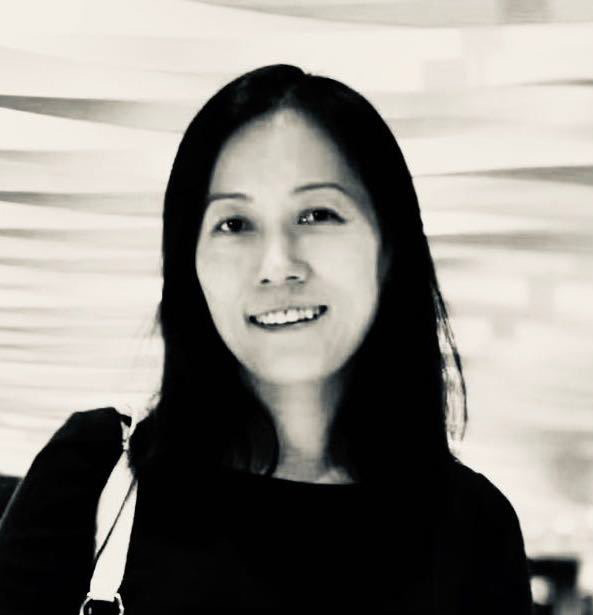
I currently teach computer art and animation as an Associate Professor in College of Visual and Performing Arts at Syracuse University. I received a M.F.A. in Computer Graphics from Syracuse University in New York; and a B.S. in Industrial Design from Beijing Institute of Technology, China. I also studied Cinematography at Beijing Film Academy. I have worked professionally in the fields of computer animation, film VFX, web design and user interface design in China and the United States.
My artwork and research interests include artistic data visualization, experimental animation, visual music, interactive installations, digital performance, and virtual reality. My recent work has appeared at : IEEE VIS Arts Program; SIGGRAPH & SIGGRAPH Asia Art Gallery; ISEA; Ars Electronica; Museum of Contemporary Art, Italy; Los Angeles Center for Digital Art, USA; FILE– Electronic Language International Festival, Brazil; Techfest -Technical Arts Exhibition, India; Colloquium culture and digitization, Switzerland; CYNETart, Germany; International Digital Art Exhibition, China. I served on the Media Arts Advisory Panel for the U.S. National Endowment for the Arts. I am the Chair for ChinaVIS conference Arts Program since 2017, the Chair for 2019, 2020 IEEE PacificVIS Visual Storytelling Contest, and is currently on the Executive Committee for the Association of Chinese Artists in American Academia.
My current research focuses on creative practice derived from data on topics of social and cultural importance, with the purpose of provoking thinking and communicating artistic agenda rather than merely illustrating the information. As a highly flexible and manipulable art material, data can provide form, content, structure, dynamic, or any other property we can think of. I believe the expressive power of this relatively new way of artmaking can be further explored, consequently provide alternate views on the original information, achieving greater awareness of complex matters in a modern world. Typically produced in a generative approach working with computer programs, my work ranges from data visualization to non-representational drawing to controlled constructions with highly studied shape, color, and texture in 3D space.
I usually start from investigating the suitable presentation forms for the information that the work needs to present, for instance, a data set of bird migration, a music piece about miscarriage, or a poem about a young women's moment of self-discovery. I then spend a great deal of time researching on ways of realization, often that includes developing custom algorithms to allow preset instructions or procedural rules. The outcome is produced through the execution of creative directions using these algorithms. This work process is an interactive one rather than a linear one. Throughout the course, ideas are inspired, developed, reflected, and built upon; and the project is completed only after many iterations of such workflow.
I draw my inspiration from my personal experience and culture background. Grown up in Confucius’ hometown, educated in both eastern and western schools, worked in the professional field (as an animator and designer) and the academia (as an educator and practicing artist), I often observe a hybrid quality in my work that reflects those experiences. Visually, my creative practice is influenced by minimalism and traditional oriental artwork. To both, balance and contrast of color, space, texture, as well as light are essential means to improve visual aesthetics.
As an educator and practicing artist, I believe it is my responsibility to foster students' critical thinking, nurture their own artistic visions, challenge and enable them to take risks, and help them build proficient skills with which they can further their growth as artists. The improvement of students' conceptual abilities and the development of their technical skills are complementary, and both contribute to the success of their artistic creations. Through my courses, I help students to understand the unlimited possibilities that reside in digital art as a relatively young medium, and to seize the unique opportunities to possibly influence its future course. In the processes of arriving at their own works, students are encouraged to be directly responsive to their specific aesthetics and cultural background, understanding themselves and their work through confronting technical difficulties, individual concepts, and viewpoints. I structure my classes recognizing the diverse preferred learning styles. Students learn not only various packages and software in class, but also to improve their learning skills, which are essential to establish themselves as contemporary artists utilizing the fast-changing digital media.
Artist Statement
I usually start from investigating the suitable presentation forms for the information that the work needs to present, for instance, a data set of bird migration, a music piece about miscarriage, or a poem about a young women's moment of self-discovery. I then spend a great deal of time researching on ways of realization, often that includes developing custom algorithms to allow preset instructions or procedural rules. The outcome is produced through the execution of creative directions using these algorithms. This work process is an interactive one rather than a linear one. Throughout the course, ideas are inspired, developed, reflected, and built upon; and the project is completed only after many iterations of such workflow.
I draw my inspiration from my personal experience and culture background. Grown up in Confucius’ hometown, educated in both eastern and western schools, worked in the professional field (as an animator and designer) and the academia (as an educator and practicing artist), I often observe a hybrid quality in my work that reflects those experiences. Visually, my creative practice is influenced by minimalism and traditional oriental artwork. To both, balance and contrast of color, space, texture, as well as light are essential means to improve visual aesthetics.